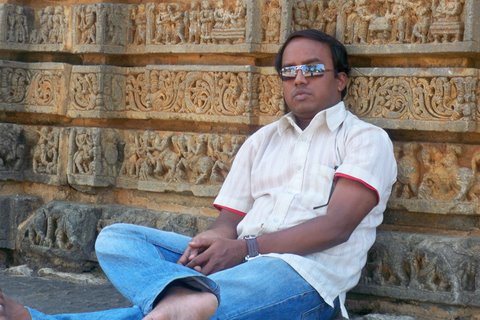Jog Falls (ಗೇರುಸೊಪ್ಪೆ ಜೋಗ) is the second-highest plunge waterfall in India, Located near Sagara, Karnataka, these segmented falls are a major tourist attraction. They are also called Gersoppa Falls, Gersoppa Falls and Jogada Gundi.
Jog Falls is created by the Sharavathi River falling from a height of 253 m (830 ft), making it the second-highest plunge waterfall in Asia after the Nohkalikai Falls with a height of 335 m (1100 ft) in Meghalaya.
Sharavati, a river which rises at Ambutirtha, next to Nonabur, in the Thirthahalli taluk
and takes the northwesterly course by Fatte petta, receives the
Haridravati on the right below Pattaguppe and the Yenne Hole on the left
above Barangi. On arriving at the frontier it bends to the west,
precipitates itself down the Falls of Gersoppa, and passes that village
(properly Geru-Sappe), which is some 29 kilometres distant, discharging
into the sea at Honnavar in North Kanara.
The Sharavati, flowing over a very rocky bed about 250 yards wide,
here reaches a tremendous chasm, 290 m (960 ft) deep, and the water
comes down in four distinct falls. The Raja Fall pours in one unbroken
column sheer to the depth of 830 ft (250 m). Halfway down it is
encountered by the Roarer, another fall, which precipitates itself into a
vast cup and then rushes violently downwards at an angle of forty-five
degrees to meet the Raja. A third fall, the Rocket, shoots downwards in a
series of jets; while the fourth, the Rani, moves quietly over the
mountain side in a sheet of foam. The Tourism Department
has built steps from the viewpoint to the bottom of the hill where the
waterfall can be seen at the opposite side. There are approximately 1400
steps built to reach the bottom of the hill.
Joga is a Kannada word meaning falls. Many Kannada speakers near Sahyadri Mountains such as in Yellapura region still use the this word Joga to mean falls. The word Joaga may have derived from Javuga which is form of the word Javalu which means water coming out forming wetlands. Jog Falls therefore could be a misnomer meaning falls falls.
Associated with the waterfall is the nearby Linganmakki Dam across river Sharavathi. The power station has been operational since 1948 and is of 120 MW capacity, one of the largest hydroelectric stations in India at that time and a small source of electric power for Karnataka now. The power station was previously named Krishna Rajendra hydro-electric project, after the King of Mysore at that time. The name was later changed to Mahatma Gandhi Hydro-electric Project. It was served by Hirebhaskara dam until 1960. After 1960, due to the ideas of Sir M. Visvesvarayya, Linganmakki Dam has been used for power generation. For more information check the Jogfalls official website: www.jogfalls.in.
Before the onset of monsoon
season, when there is not much water in the Linganmakki dam, the Jog
Falls are a pair of thin streams of water trickling down the cliff, as
the water collected in the dam is exclusively for generation of
electricity; during monsoons local rain water is the source of water to
the falls.
The text taken from www.en.wikipedia.com
CA SHIVA SHANKARA R. SHETTY
CHARTERED ACCOUNTANT
Mobile: +91 9035846043 Email: ca.srshetty@icai.org
www.casrshetty228359.in

